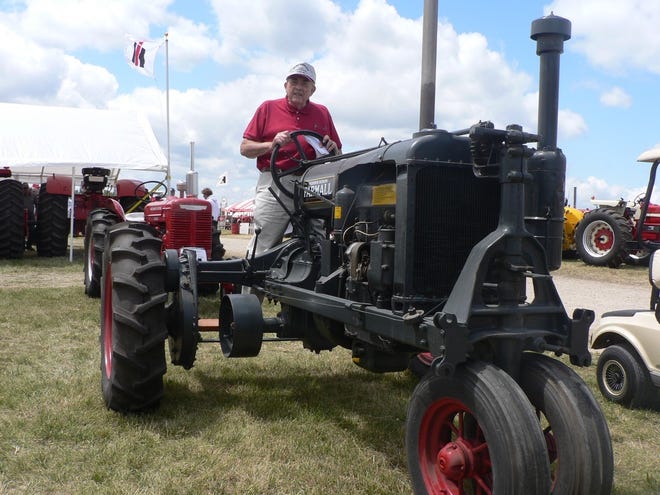A memory as the season turns

A bright sun, warmish breeze. The fact that one can leave the house without a heavy coat gives one the feeling that spring is indeed here to stay. Sometimes during the past few months, when temperatures dropped below zero, we may have had our doubts – but we should know better. Spring always comes and the farming new year begins again.
As a youngster I well remember that spring meant no more long underwear, neck scarfs, caps with ear flaps or sub-freezing temperatures in the upstairs bedrooms (before Dad had the house insulated).

Spring is work time
But what spring on the farm really signified was the soon-to-begin fieldwork, getting the fields ready for another crop year. In my early days, that meant a combination of two horses, Sandy and Rex, and the F-20 Farmall red tractor (repainted from its original gray color by the dealer) that Dad had bought used.
But before the plowing could begin, there was the matter of the huge manure pile in the barnyard that had accumulated over the long winter months, when the cows spent most of their time in the barn. Those were the days before manure lagoons or even barn cleaners. Our barn aisle was too narrow for a manure spreader, so the Oncken barn had an overhead track on which a manure carrier traveled as you forked and shoveled it full with manure from the gutters.

The manure carrier ran on an overhead track six feet off the floor. The hazard to us three Onckens – all over six feet tall – was that track. I can still see and feel the pain when my dad, brother or I would unthinkingly straighten up and hit that sturdy track head-on.
The carrier full of manure went out the door and was dumped into the manure spreader if we could get into the field or pushed up a steel cable (maybe 60 feet long) attached to a long upright pole anchored in the ground and dumped on the pile that got bigger day by day.

Fertilizing, fork by fork
Come spring we loaded that pile into the manure spreader and fertilized the fields. When my brother and I were old enough, maybe 10 or 12, Dad paid us each 10 cents a load to fill the spreader and move the pile to the fields. I remember one year we each made eight dollars and were quite pleased with the deal.

That’s how the manure was handled at the Oncken farm, even until my brother and I were long gone and Dad sold the cows, and ultimately the farm.
I loved plowing with our two-bottom Oliver plow and Farmall tractor, watching the new soil appear and smelling the clean black earth as it turned over. Most of the time I stood on the several two-inch planks mounted on the drawbar platform while plowing. Our tractor had a "Stoughton Stone Hitch" that connected directly to the tractor clutch, which meant that when the plow hooked a big rock, the tractor instantly stopped. If you weren’t prepared you could end up with a mouth full of iron steering wheel. So I stood, thus putting the steering wheel about chest high.

In those days we plowed, disced and dragged the old sod fields in preparation for planting corn. For many years I ran the tractor working the ground while Dad would begin planting corn with the two-row planter pulled by the team of horses. Most fields were check-row planted using a special wire running the length of the field that would cause kernels to drop at a predetermined distance, thus allowing the cornrows to run up and down and crossways. It was a lot of work moving the wire every pass across the field, but the result allowed cultivation in both directions for better weed control.

Killing weeds was hard work
Yes, in those pre-herbicide days weed control in corn was done mechanically with a horse-driven or tractor-mounted cultivator. I’ll never forget the hours and days spent on that horse-powered cultivator pushing the foot pedals to avoid uprooting any corn. I also remember reading a book propped on the crossbar just above my knees while watching the cornrows pass between my legs. (I’m not exactly sure how I did this, but I surely did it.)

I’d guess it’s difficult for today’s generation to even imagine planting corn in such a fashion, but it did work – slowly, but surely. Then consider picking that corn with a one-row picker that produced husked ears of corn that were unloaded from the wagon with a man-powered scoop shovel into the corn crib.
I’m still not sure how we farmed so successfully in that long-ago era, but we did – that’s the way farming was done. It was in the 1960s and 70's when mechanization really hit farming and led the technology revolution. Forty years from now, old farmers will try to explain to grandchildren how they farmed under the primitive systems of 2021 and all will wonder how they did it. Bet on that!

John Oncken, owner of Oncken Communications, can be reached at 608-837-7406 or email him at jfodairy2@gmail.com.